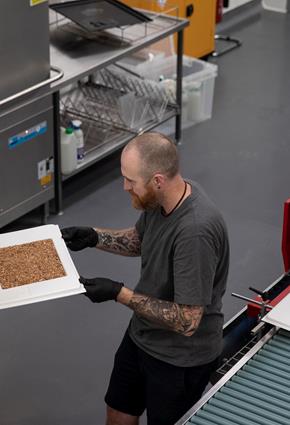In honor of the six plants we work with to create each of our Seedlip Spirits, we’re putting six questions to makers and creators whose life and work is influenced by the natural world.
In this month’s Six with Seedlip, Louisiana naturalist and Canoe & Trail guide Kevin McDunn [pictured above], tells us how he geeks out on nature and shares his love for the flora & fauna of the NOLA wetlands.
I. How did you become a naturalist guide?
I’ve been a lifelong biology nerd. I spent five years working as an environmental attorney, providing counsel for a Louisiana agency during the Natural Resource Damage Assessment process during the BP oil spill. After that was complete, very few interesting attorney jobs came through so in theinterim I managed to get a gig working as a field herpetology tech doing reptile and amphibian surveys in several nearby National Wildlife Refuges. Once that project had finished, I was eager to keep working as a “naturalist for hire” instead of rushing back into office work. That’s when I began guiding for Canoe & Trail. It is rewarding, fun and challenging work and I’ve done it as my primary occupation for two and a half years. I’m now beginning work as a full-time science teacher, but plan to still guide Canoe & Trail trips for many years to come.
II. When you are not leading an outing, where can we find you on your day off?
Probably walking in areas nearby. Places I don’t visit as often, looking for snakes, finding new plants and listening for frogs.
III. Research that has taken place in Louisiana has played a pivotal role in our knowledge of the flora and fauna of North America. What vegetation and wildlife can we expect to see in the bayou?
The bayou changes with the seasons. In spring it is common to see alligators and snakes basking in the sun. In the summer, the mallows are blooming, you can hear the cicada’s drone and the orb weaver spider spin their cast webs. In autumn, incredible murmurations of swallows can be seen over the marsh and during the winter months, you can drift in an eerie silence until calls of the leopard frogs, cajun chorus frogs break it, heralding a spring that may still be weeks away.
The global ecology has been in a state of massive flux since humans began rapidly traversing the globe in the early 1500s and in the south, Louisiana wetlands are a microcosm of this larger pattern. Long-present species such as the bald cypress tree, water tupelo and Spanish moss are still seen in abundance, but just as present are new arrivals from across the globe: water hyacinth, alligator weed, alligator weed flea beetles and Chinese tallow.
IV. What steps is the company taking to become sustainably sound?
As a guide, I’m always collecting litter that we encounter on the bayou, which has unfortunately been left behind by others. I want the paths we take to be cleaner after our trip than they were beforehand.
V. If you were a plant what would you be any why?
I’d be a bald cypress tree. They live such long lives (potentially over 2000 years) and I’d be a witness to so much history. They live in dynamic environments, which would avoid monotony despite being stationary. They are also the backbone of the swamp ecosystem, allowing so much other life to flourish.
VI. If you were an animal what would you be any why?
A great blue heron. Adults have little to fear from other predators, and their lifestyle of conducting patient searches for prey through dynamic environments seems appealing. They see so much of the continent while stillpreferring to spend most of their time in wetlands. As a tall lanky person, I’ve always identified with tall lanky birds.
Follow Kevin and find out more about his adventures @krait_marais @canoeandtrail




